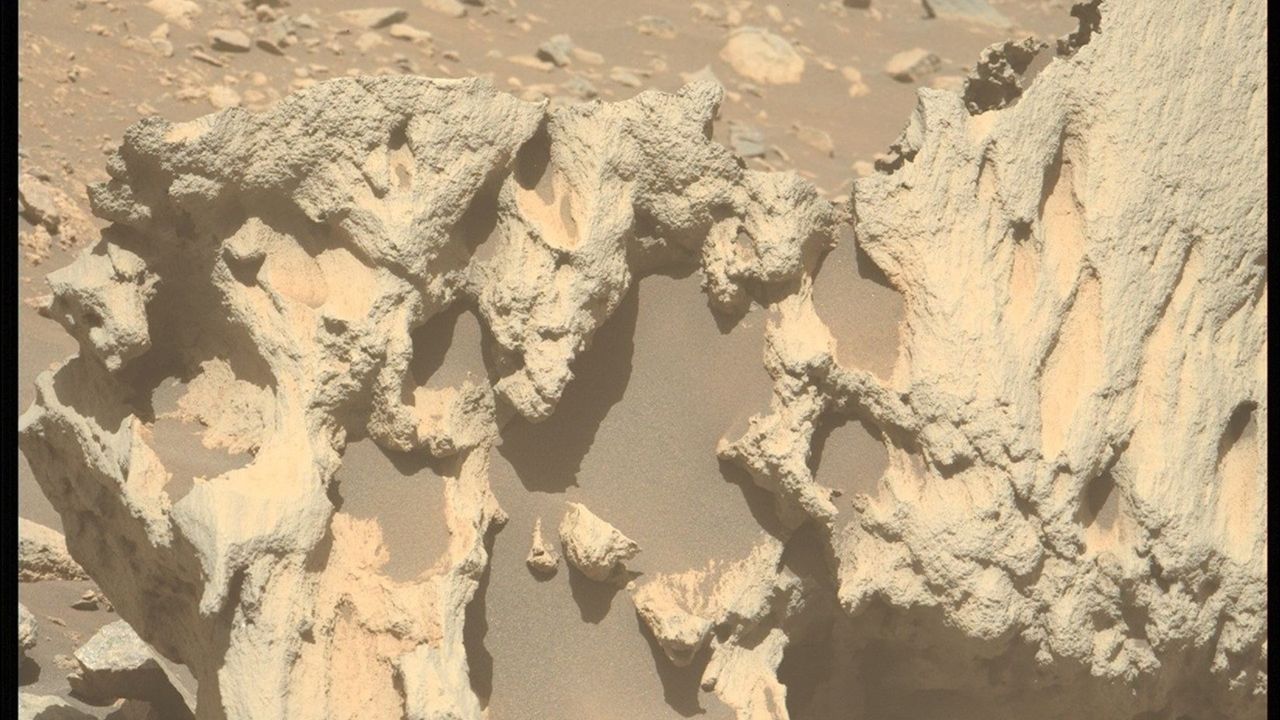NASA’s Perseverance rover has potentially identified its first meteorite on the Martian surface. On September 2, 2025, during Sol 1612 of its mission, the rover detected an unusual rock formation, later dubbed “Phippsaksla,” which stands out among the surrounding low-lying terrain. This discovery was highlighted in a blog post on November 13 by Candice Bedford, a research scientist at Purdue University.
The rover first captured images of the rock using its left Mastcam-Z camera, which is mounted on its mast. Following this, Perseverance employed its SuperCam laser instrument to analyze the composition of the rock, measuring approximately 31 inches (or 81 centimeters) in length. The analysis revealed that the rock is primarily composed of iron and nickel, elements typically found in the cores of large asteroids. If confirmed as a meteorite, this would mark a significant milestone for the rover since landing on Mars on February 18, 2021.
Meteorites are smaller fragments of meteoroids that have successfully landed on a planetary surface. Asteroids, which are larger bodies of rock left over from the formation of the solar system around 4.5 billion years ago, often yield these meteoroids. The Perseverance rover team has adopted a naming system for its scientific targets to enhance public engagement. The name “Phippsaksla” is derived from a location in Svalbard, Norway, while the site of the discovery has been named “Vernodden,” also inspired by a location in Svalbard.
Previous Discoveries and Context
While this represents Perseverance’s first suspected meteorite find, it is noteworthy that the Curiosity rover has previously discovered several iron-nickel meteorites on Mars. Curiosity, operational since 2012, found significant examples such as the 39-inch (1-meter) “Lebanon” meteorite in 2014 and another rock nicknamed “Cacao” in 2023. NASA’s earlier Mars Exploration Rovers, including Opportunity and Spirit, also identified numerous meteorites during their missions, which has raised questions among scientists regarding Perseverance’s prior lack of finds.
Over the past year, Perseverance has been meticulously surveying the rim of its landing site, Jezero Crater. Bedford pointed out that Jezero Crater, which shares similarities with Gale Crater in age and geological history, should logically contain more meteorites. The presence of smaller impact craters suggests that meteorites have likely fallen on the crater floor and delta throughout time.
Despite its recent discovery, meteorite hunting is a secondary mission for Perseverance. The rover’s primary objective is to search for signs of past life on Mars and gather samples for a potential future return to Earth. Just last month, NASA reported that Perseverance detected chemical signatures that may indicate interactions between sediment and organic matter. However, conclusive results will require these samples to be returned to Earth for further analysis, as the rover’s instruments have limitations.
The discovery of Phippsaksla is an exciting development in Mars exploration, adding to the growing body of knowledge about the Red Planet’s geological history and potential for past life. As Perseverance continues its mission, scientists remain hopeful for more findings that could deepen our understanding of Mars and its place in the solar system.
